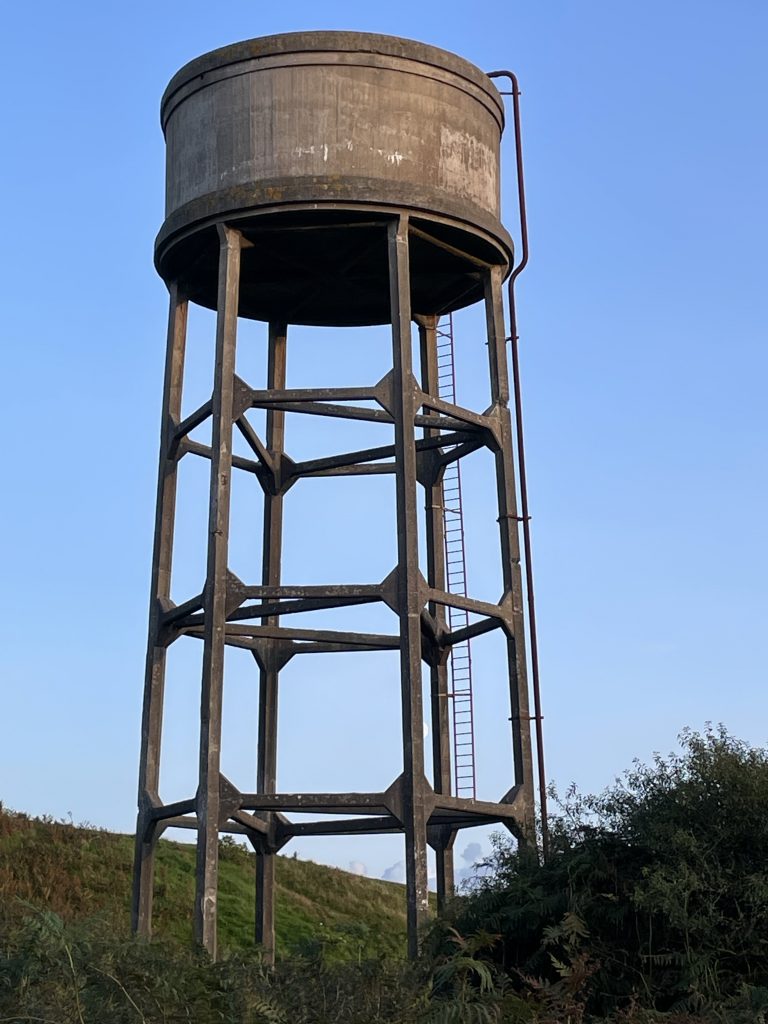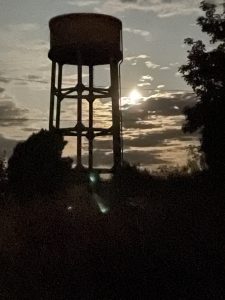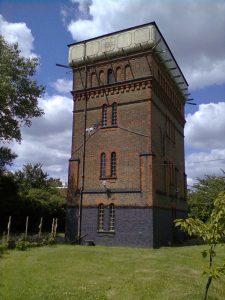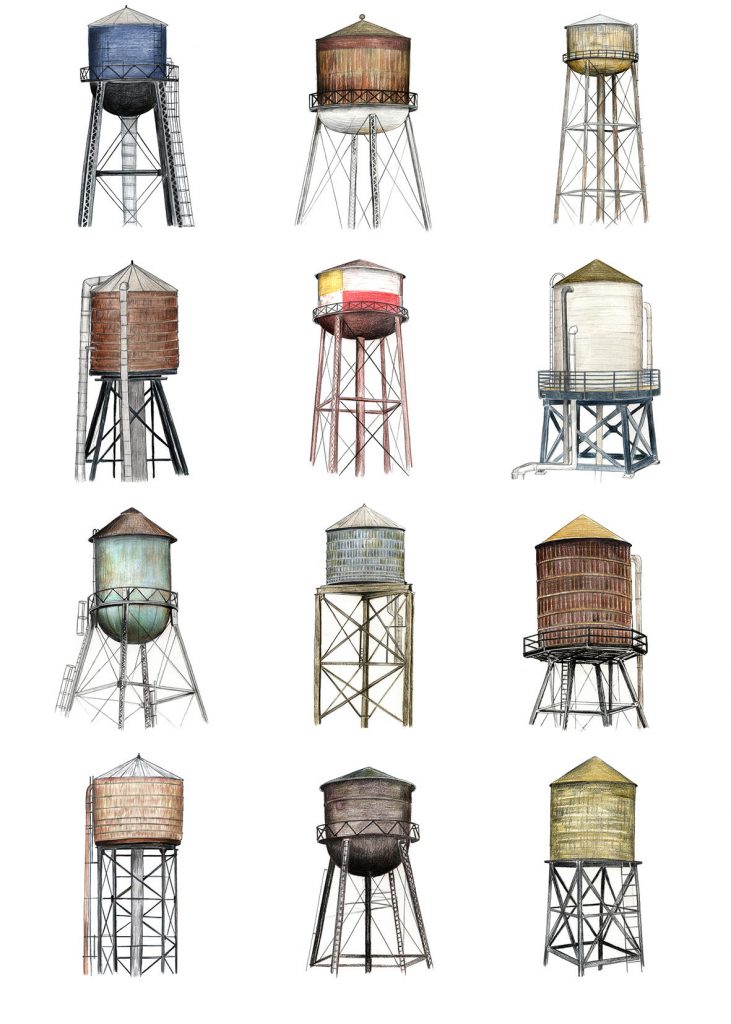I don’t mean rigging up a shower underneath a water tower, though that’s quite a cool idea. More it’s showering in water that’s come via a water tower. So where have I been doing that? Well, actually nowhere. The water tower in Sandy Lane, Gower, where we were staying last August has been out of action for many years now. But it takes a nice picture, whether in the day or at night. And it’s very useful for finding your way back to the Lane after a walk to the beach.
And not at home either. We are very near to St Ann’s hospital which has its own rather impressive water tower built around the 1890s. It’s hard to be sure but I think it was built purely for the hospital and not for the houses in adjacent streets. But I do enjoy the engineering of water towers. Like a cold water storage cistern just much much bigger! And higher up. There are two ways to get 3 bar pressure at taps in a building. You can do it with pumps or you can do it by supplying water from a height of 30 metres.[1] And that is where water towers come in.
Water towers serve two main purposes:
- They provide water storage to level out the peaks of daily water demand.
- They maintain water pressure, through gravity, to distribute water to the building and ensure a good flow rate from taps etc.
Although the use of elevated water storage tanks has existed since ancient times in various forms, the modern use of water towers for pressurised public water systems developed during the mid-19th century, as steam-pumping became more common, and pipes that could handle higher pressures were developed. The golden age of water towers in the UK was 1860-1930. After that water began to be piped to individual properties. Most UK water towers were built in the Victorian era and are brick. Post 1945 the towers were built of concrete. Few are in use today in the UK as modern pumping has enabled water pressure to be maintained without such towers.
The iconic water towers of New York
I did shower in New York, many years before this shower blog was even a twinkle in my eye. In my mate Judy’s flat in Brooklyn, in a building that would definitely have had a water tower on the roof, one of the over 10,000 wooden water towers that are dotted around the rooftops of New York City.
In the 1880s, steel was transforming the New York skyline, allowing buildings to reach above five stories, but also creating a water supply problem as the, water pressure could only reach the fifth floor. Taller buildings needed water for the upper floors and enough water to feed the sprinklers if there was a fire. These wooden towers, which hold up to 45,000 litres of water (10,000 gallons) are still the water source for many of the city’s buildings.
The original water tower builders were barrel makers who expanded their craft to meet the need for water storage. No sealant is used to hold the water in. The wooden walls of the water tower are held together with steel cables or straps, and when first constructed water leaks through the gaps. However, as the water saturates the wood, it swells, the gaps close and become impermeable. The water towers provide drinking water as well as water for showering, flushing the toilet etc. So as not to taint the drinking water, the wood isn’t painted or chemically treated. Most tanks are made from western cedar and last 30-35 years. When redwood was available at reasonable prices, tanks used that wood and lasted longer.
Although there are some concerns about the state of the water towers, city health officials say that the tanks pose little health risk for several reasons: The water is constantly being drawn and replenished, leaving little time for bacterial growth; the water is protected by chlorine; the wood behaves as an insulator that keeps the temperature low; and because water enters through the top and is drawn out of the middle of the tank, sediment and contaminants sink to the bottom.
This website has some interesting details and photos of different UK water towers.
And this one has a good video about water towers in New York.
[1] If the water tower is 20m high then the pressure is 2 bar.




